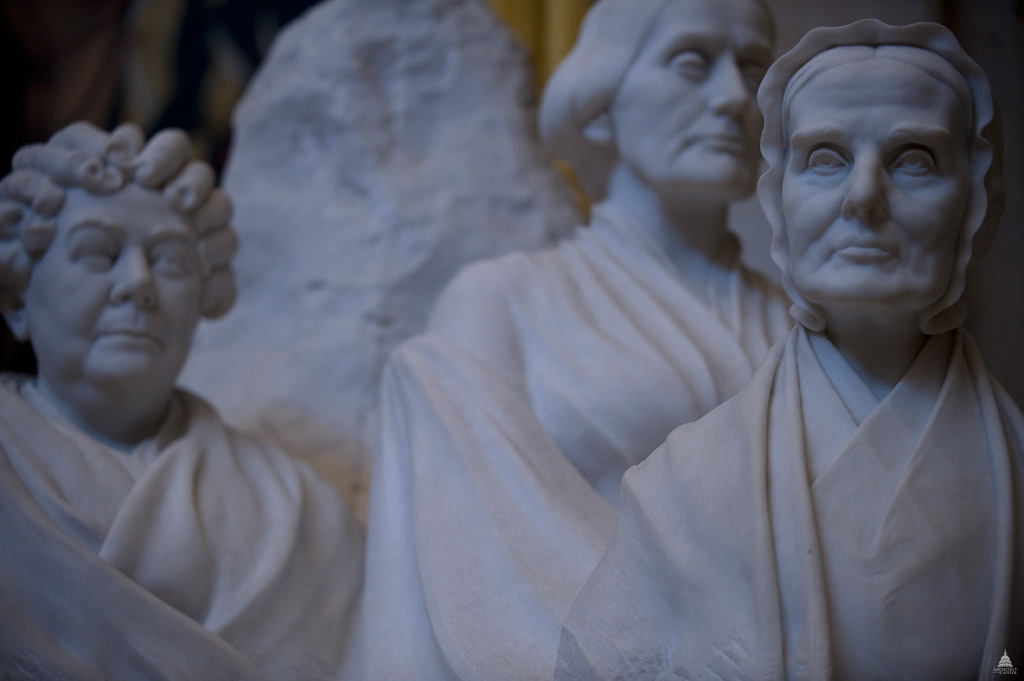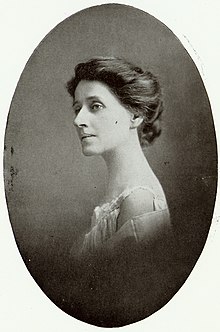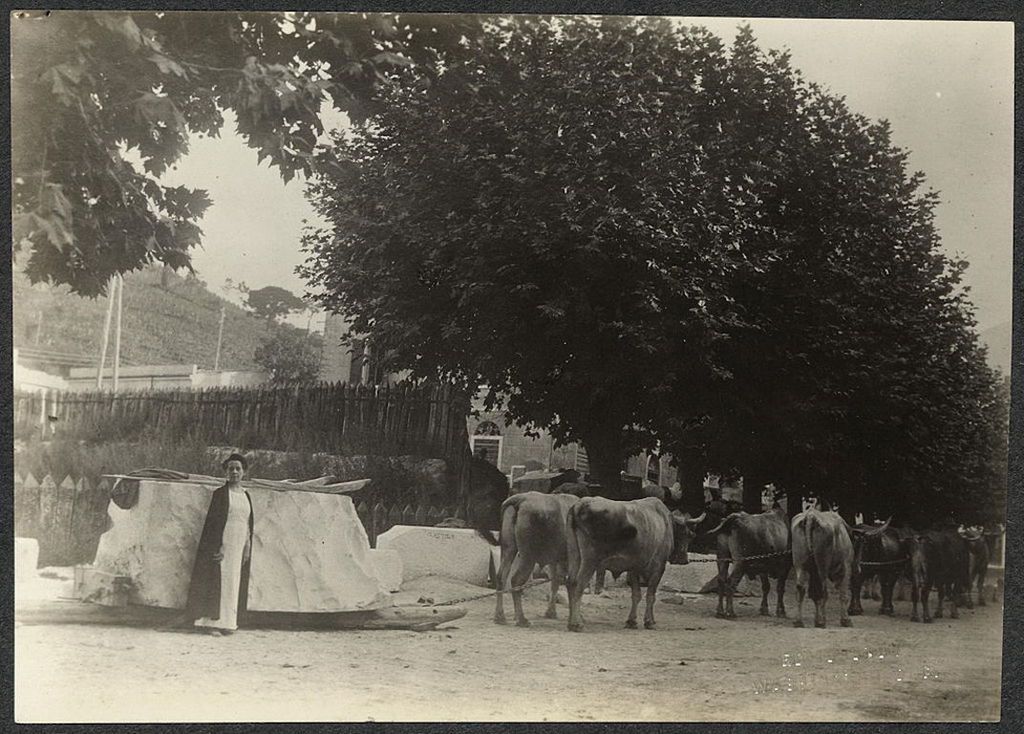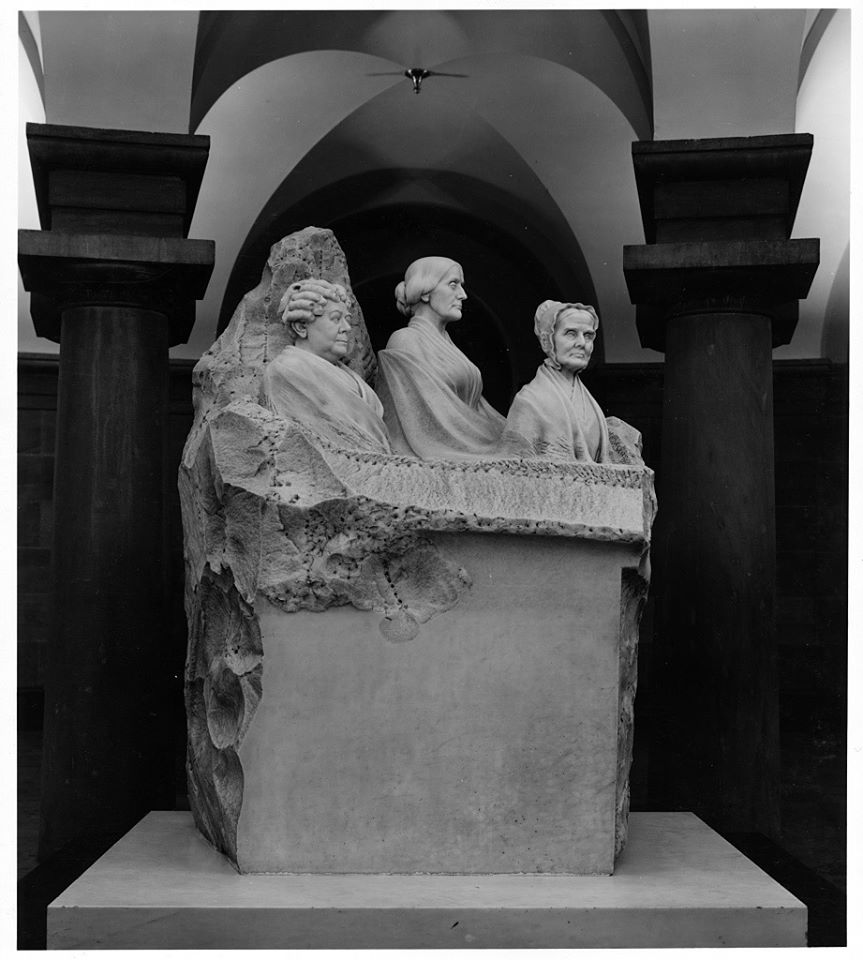
Illinois born sculptor Adelaide Johnson is remembered, if she is remembered at all, as the artist who created the Portrait Monument of suffragists Susan B. Anthony, Elizabeth Cady Stanton, and Lucretia Mott that stands in the Rotunda of the U.S. Capital. Commissioned by the National Women’s Party after the passage of the 19th Amendment in 1920, controversy surrounded the monument almost from its beginning. The controversy stemmed at least partly from Johnson’s artistic demands and the design she chose for the monument itself. The grouping of the busts of the three women with one of the busts and the lower half of their bodies left uncarved struck many as incomplete and strange. Johnson would not back down and reluctantly gave what she always felt was her statue to the nation in February of 1921. For many years it was displayed in the “Crypt” of the capital, and only in 1997 was it moved to the prominent location it now holds.

Adelaide Johnson was born on September 26, 1859 in Plymouth, Illinois to Christopher William Johnson and Margaret Hendrickson. Her father was originally from Carthage, Illinois; however, Adelaide Johnson spent her childhood in Plymouth. Her early education took place in a one-room country schoolhouse. Early in life, Johnson discovered that she was very skilled with artistic projects. When she was 15 years old, in September of 1875, her parents sent her to the St. Louis School of Design. During her time at the design school, she lived with her stepbrother. Johnson excelled in her woodcarving classes, which resulted in her winning a medal at the Missouri State Exposition in 1877.
The goal of the St. Louis School of Design was to help women successfully pursue work in the commercial art business, which was dominated by men. Johnson was greatly influenced by the work of Mary Henderson, founder of the school. Mary Henderson was socially progressive, and worked for women’s advancement in many ways, including as president of the Missouri State Suffrage Association. Henderson was also progressive in her attitudes about healthy foods and living, which Johnson adopted as well. During her time in St. Louis, Johnson reportedly had two romances; however, she was more focused on her career and did not seriously pursue marriage.
After her graduation, Johnson moved to Chicago in 1880. She continued her art career by opening a decorative arts business at the Central Music Hall, which was on the corner of State and Randolph. Johnson partnered with fellow artist Ida Morgan, which allowed their business to thrive. Their business specialized in interior decoration, painting, and woodcarving. Unfortunately, during her time in Chicago, Johnson had an accident in the elevator shaft that left her with a shorter right leg and a two-year recovery. However, she did receive $15,000 from the lawsuit that ensued.
Johnson left Chicago in 1883 to study sculpture in Italy. She arrived in Rome in January of 1884. With the assistance of noted sculptor Harriet Hosmer, Johnson was able to find a position in the studio of Giulio Monteverde. She studied with him for a year before returning to Illinois.
Johnson became connected with the women’s suffrage movement when she attended the 1886 meeting of the National Woman’s Suffrage Association (NWSA) in Washington D.C. There she met Ellen Sheldon, recording secretary of NWSA, who insisted that Susan B. Anthony sit for a bust to be made. Johnson returned to Italy in 1887 to complete the marble carving of the bust. This was the first of nine busts that Johnson did of Anthony. While working on these busts of Anthony, Johnson would later recall fondly the many conversations they had.

In 1892, Johnson was commissioned by NWSA to create three busts of Anthony, Elizabeth Cady Stanton, and Lucretia Mott, for display at the Women’s Building at the Columbian Exposition in Chicago. She was paid $2,400 but felt this was inadequate so kept the busts in her studio following the exposition, causing a break in her friendship with Anthony and with NWSA. Anthony died in 1906 with this unresolved.
In 1920, as the battle for the 19th amendment looked to be finally ending with its passage, Johnson reached out to the leader of the National Woman’s Party (NWP), Alice Paul. Paul agreed to pay Johnson what she believed she was owed from the 1892 commission and contracted with Johnson to make a new monument to honor the suffrage movement and its leaders. Johnson began work on the Portrait Monument in July of 1920 in Italy. Early response to Johnson’s design was not positive. Paul wanted something more traditional – while Johnson wanted to leave the work incomplete to reflect the idea that the work of women’s equality was unfinished. Johnson remained steadfast in her artistic vision.

The dedication of the finished monument was held in the U.S. Capital on February 6, 1921, to coincide with Susan B. Anthony’s birthday, with Jane Addams presiding over the ceremony. Many former leaders of NAWSA boycotted the ceremony, dissatisfied with the choice of Johnson and the final result of her work.
After achieving this height of success, Johnson’s later years were difficult. Her financial resources dwindled leaving her to live for a few years at the headquarters of the NWP in Washington DC. By 1939 she had destroyed many of the remaining sculptures in her studio in a fit of frustration and disappointment. Johnson lived until 1955 with the support of the government and remaining friends.
Sources
Novak, Richard F., & Davidson, Catherine Novak (2011). Adelaide Johnson’s Portrait Monument. Rockford, IL: SW Publishing.
Architect of the Capital – monument description – https://www.aoc.gov/explore-capitol-campus/art/portrait-monument-lucretia-mott-elizabeth-cady-stanton-and-susan-b
Smithsonian Magazine –
https://www.smithsonianmag.com/history/suffragist-statue-trapped-broom-closet-75-years-180963274/
